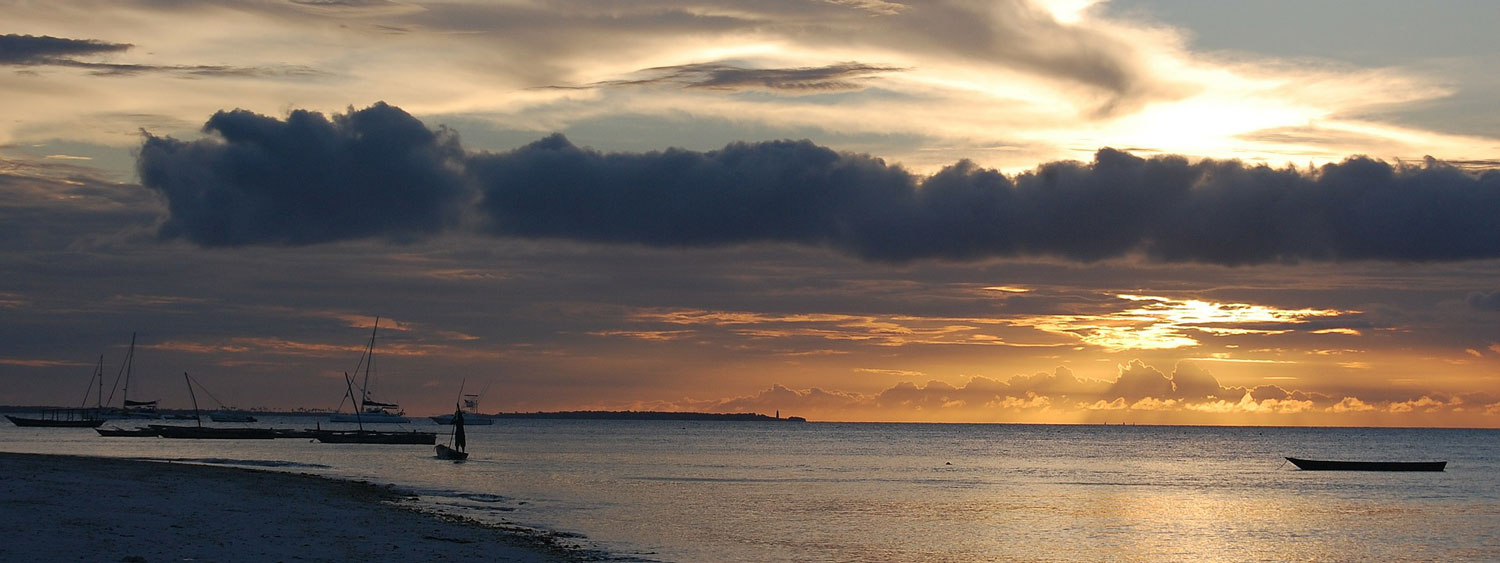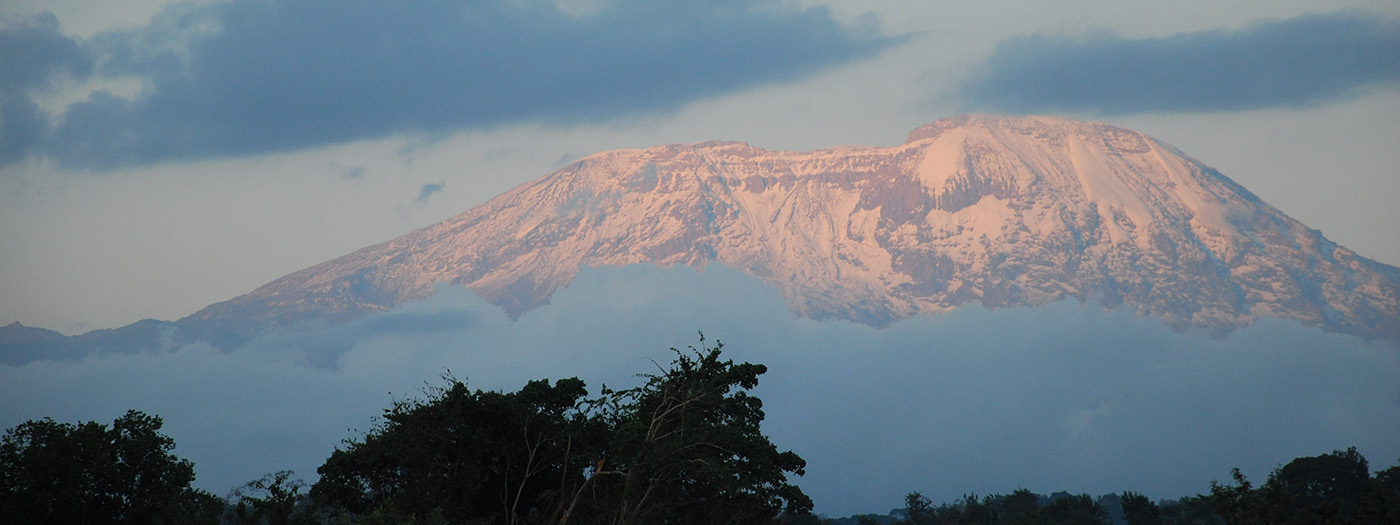Lake Manyara National Park has different ecosystems: the lake, the forests and the plain. The lions of the park climb trees because they do not like the wet ground from the underground springs. Rich in primates, birds and large herbivores, it is usually one of the first stops during the safari in North Tanzania.
Lake Manyara National Park is one of the most important parks in Tanzania Northern circuit. It has an area of 325 sq. km and in 1981 it became a biosphere reserve due to the diversity of its ecosystems. In the northern part, after the main gate, there is a dense forest with a lot of noisy baboons. Then we have the African savannah, the marshy area with many water birds, the hot springs (Maji Moto) and Lake Manyara.
The park borders the Masai village of Mto Wa Mbu (in Swahili "mosquitos' river") and runs along the road that leads to Ngorongoro and Serengeti, the most famous parks in Tanzania. It is only 126 km of paved road from Arusha which can be covered in less than 2 hours. In the park, we find many herds of elephants, baboons, lions, giraffes, wildebeest, zebras as well as many species of birds, including pink flamingos.
Description
Described by Ernest Hemingway as “the loveliest I had seen in Africa”, Manyara National Park is picturesque treasure. Lake Manyara is 50 kilometers long at the base and runs 600 meters high along the Rift Valley.
From entering the gate, you will begin to see the biodiversity of this Tanzanian park from viewing the wildlife and the flora. First, travel through the abundant forest where you can observe baboons in troops of over 100 along the trail. Then, look up to see blue monkeys darting through the primal mahogany trees while smaller bushbucks creep in the darkness of the background and larger forest hornbills create louder noises above.
Moving onto the floodplains offers vast outlooks to the alkaline lake and Maasai Steppes that have rigid blue volcanic crests. This wide view is in stark opposition to close proximity of the forest habitat. As such, it offers larger mammals, such as buffalos, wildebeests, zebras and giraffes, the chance to gather among the grassy hillsides.
In order to observe the lions and elephants, you will need to venture into the acacia woodlands. You will see lions climbing in the trees as well as marvel at the great tusks of the elephants. The smaller animals are not to be outdone by larger mammals. The mongeese scurry between the acacias with the smaller Kirk’s dik-dik following behind them in their shadow. In the hot springs of the lake near the south side of Manyara National Park, you will find klipspringer couples spotted on the rocks.
Manyara National Park also boasts an impressive amount of birds with more than 400 species on record. In one day, visitors can easily observe over 100 different species of birds, including the famous flamingos, pelicans, cormorants and storks.
About Manyara National Park
- Size: 330 sq. km of which 200 sq. km are covered by the lake when it is in flood.
- Location: Northern Tanzania.
- Distance from Arusha: 126 km West.
- Dry season (July-October) - best period for large mammals.
- Wet season (November-June) - best period for birds, waterfalls and canoeing.
The Rift Valley and Lake Manyara National Park
The Rift Valley is an area over 6000 km long with a width ranging from 30 to 100 km, starting from the North of Syria and reaching Mozambique.
From the Red Sea, the Rift Valley divides into the Western and Eastern branches of the Afar Triangle, also called the Danakil Depression, in Ethiopia.
The Eastern branch proceeds into Kenya and Tanzania and includes Mount Kilimanjaro, the highest mountain in Africa and Lake Manyara National Park.
Lake Manyara is located right next to the edge of the Rift Valley, the Escarpment, where there are several accommodations with amazing view on the lake and valley.
Manyara National Park Flora
The name of the park derives from the Masai word “emanyara” which identifies a common plant of the euphobia genus that the Maasai use to build their houses and boom fences.
In the park we find 5 different environments with different flora:
- The equatorial forest fed by groundwater
- The xerophilous forest with acacia trees and palm trees
- The lake environment
- The savannah and the flat palins
- The hot springs (volcanic zone)
Inside and outside the park we can easily identify the huge baobab trees, a source of food, shelter and water for many animals.
Lake Manyara Weather
Throughout the year, the visit and photo-safari in Lake Manyara National Park are possible and enjoyable.
The dry season from July to October is the best for spotting large mammals and for walking activities. In this season, coming from the Tarangire Park, you can cross the entire park and the 5 ecosystems that make it up, and then exit the main gate next to Mto wa Mbu village.
The wet season from November to June is the best period for birds, waterfalls and canoeing excursions, however, there is no shortage of sightings of typical African mammals all the year around.
Manyara National Park Activities
The park of Lake Manyara and the village of Mto wa Mbu bordering the park offer many alternative activities to the classic game drive. These activities can take place inside the park, in the protected area bordering the park, or in Mto wa Mbu village. This is the only park in Tanzania where you can experience a night game drive.
Night game drive
The night game drive last around 2 hours looking for nocturnal wild animals among the sounds of the savannah at night. A special vehicle with spotlights is used for the night game drive. After sunset, it can get cold in the open vehicle, the advice is to have a warm jacket so that you can enjoy this unique experience.
Walking safari with the park ranger
We can organize a walking safari with armed park ranger. You will see the bush from a different perspective and walk around looking for footprints and wild animals.
Mto wa Mbu Visit
Visiting Mto wa Mbu village is a fun experience for those who want discover the local culture and traditions. Different tribes live in this village such as the Makonde, woodcarvers, and the Chagga, who produce banana beer.
The village is located next to Lake Manyara National Park border. You will visit the plantations, the local market, thelocal artists and craftsmen's shops with your local guide from the culture tourism project.
The visit is possible walking, by bike, or aboard the "bajaji", a three wheels motorbike.
Maasai Boma Visit
Along the road that leads from Arusha to Lake Manyara, we will see many Maasai shepherds intent on guarding and grazing their livestock. Before the Mto wa Mbu village, we can stop and visit a Maasai, here you can discover Maasai culture and traditions.
For more information:
"The Masai and the visit of the Masai boma in Tanzania"
Canoeing excursion
The canoeing excursion on Lake Manyara is the best opportunity to experience something different than the game drive as well as visit the lake and the park from a different perspective.
Mountain bike excursions
For the more active people, biking is ideal way visiting Mto wa Mbu or for a ride in the savannah on the edge of the park. Some paths are bumpy, a real off-road, but this is also part of the Tanzania adventure .
Lake Manyara Wildlife
The first animal you will remember sighting in Lake Manyara National Park is the baboon. After the main entrance, in the tropical forest, many groups of noisy baboons will surely catch your attention.
The most famous attraction in the park are the tree climbing lions, they have the habit of climbing trees to avoid lying on the wet ground. There is no shortage of typical African mammals such as hippos, elephants, giraffes, zebras, buffaloes, wildebeest and antilopes.
Many species of residential and migratory birds can be seen in the park, for example hornbills, eagles, vultures, flamingos, storks and many others. This is one of the best parks for birdwatchers.
In the wet season, several animals migrate from Tarangire park to Lake Manyara making it preferable to visit this park over Tarangire National Park.
Camps and Lodges next to Lake Manyara
Due to the small size of the park, there are no accommodations within the park. We recommend driving to Karatu and staying overnight at Ngorongoro Marera Mountain View Lodge to shorten the next day transfer to Ngorongoro and Serengeti.
Near the park, our favorite accommodation is Escarpment Luxury Lodge for the amazing view and the strategic position on the edge of the rift bordering the park. Other very famous accommodations are Serena Manyara Lodge, Kilimamoja Lodge and Manyara's Secret.
For camping, we recommend the Migombani camp, near the main gate, one of the few campsites with good and clean facilities.
Safari in Lake Manyara National Park
Many of our safaris include Lake Manyara National Park visit. The best-selling safaris to visit Lake Manyara are:
You can contact us for your tailor made safari program - info@savannahexplorers.com or Whatsapp +255 765 972 458




